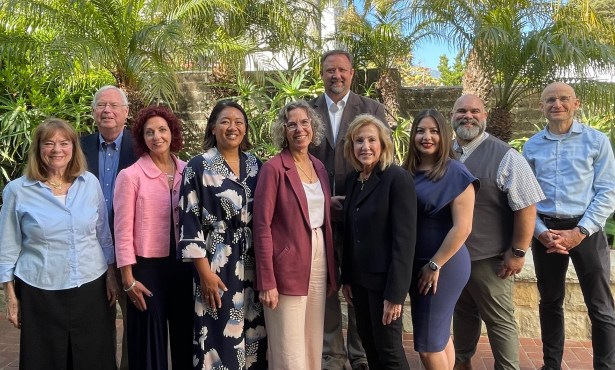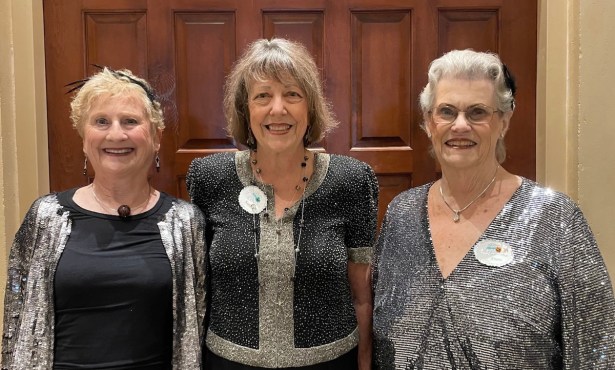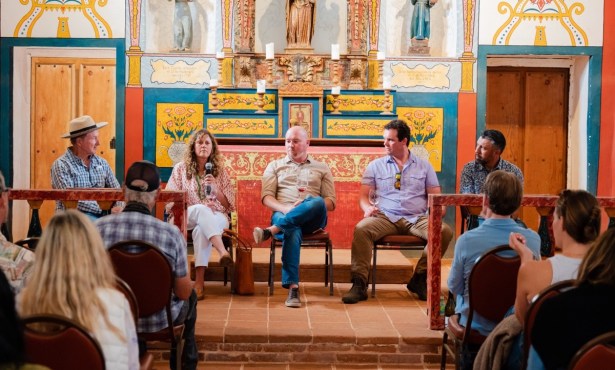A Treasure Trove in Your Own Backyard
Touring the Natural Beauty of the Coal Oil Point Reserve

Recently, I found out about something pretty incredible the way I usually do: by accident.
I was at a bar, listening to a band, when the friend of a friend mentioned he went on a great tour at Coal Oil Point Reserve. When pressed for information, he gave instructions that were a little vague. He mentioned something about making reservations, and meeting at a bench. (His wife had made the arrangements.) After searching the Internet, however, I found the information I needed.

A couple of weeks later, my family and I met a tour group at the point. Leeza Charleboix, our guide and the reserve’s education coordinator, started out by telling us a little about the history of the area. Coal Oil Point, as shown in aerial photos at the beginning of the tour, had gone through many changes over the years. It went from being undeveloped to developed, the Devereux Slough had been cut off from the Goleta Slough, and the Campbell family had come, enjoyed, and sold. Charleboix included other interesting facts, such as why there’s an enormous stone cross at the point – I’m not telling. You’ll have to take the tour to find out – and how much of the oil from the 1,200 seeps in the area ends up on Los Angeles beaches (It’s 55 percent.)
Even before we started walking around the reserve, we visited the greenhouse. It was a riot of color with poppies, Coast Golden Bush, and Blue-Eyed Grass growing in rows. Charleboix said that all the plants had been grown from seeds collected out in the reserve.
Even though it is a relatively small reserve, Coal Oil Point, part of the University of California Natural Reserve System, provides examples of eight different habitats. Charleboix said there is the rocky intertidal, which she described as “one of the best places to go tide pooling in all of California,” the sandy beach ecosystem, and the vernal pools, just to name a few. As one of the tour participants, Poornima Wagh, put it “This is like a treasure trove. It is right in our own backyard.”
At the beginning of the tour, we headed to a lookout on the point where we could see the beach, the sand dunes, and the mouth of the Devereux Slough. Charleboix said the sand dunes had changed over the years, and the mouth of the slough had moved. She explained that an unforeseen benefit resulted from part of the beach near the mouth of the slough having been roped off to protect Snowy Plovers: Without people walking over them all the time, the dunes had grown larger and more stable.
Next we headed down the road to the Devereux Slough. This time of year there is little water, but there is still a lot to see. We used a birding guide to identify a Great White Egret and a Snowy Egret. I still don’t remember which one has a yellow beak and black legs, and which one the opposite, but the birds were beautiful. I glanced over at what was once was the Campbell mansion, a building with more than 100 rooms, and 18 bathrooms. I also found out about the bridge to nowhere. You can see it near the mouth of the slough. It is connected to land on one side. Charleboix said the bridge had served as a pier for the Campbells, and their friends when they had docked their yachts in the slough area. While there had been some discussion about rebuilding the bridge, there had been a reason to leave it as it was. Someone from the reserve had seen a bobcat on the other side. In order to keep the animal’s habitat intact, reserve representatives had
decided to leave the bridge as it was. She said that protecting animals while not upsetting the natural balance is a constant concern. For example, she said the Monterey Cypress trees located at the point aren’t native to the area. Shorter, more wind tolerant species are. However, a type of raptor lives in the trees. If the trees are removed, the raptors would lose their homes.
When one of the tour participants, a very young one, asked whether there were alligators in the slough, it does look slightly swampy, Charleboix said no, but there had been a bear swimming in the ocean near the mouth of the slough about a month ago. I would have liked to have seen that.
Next we took the Pond Trail down toward the beach. Along the way we saw a snake lying across the path. While an interesting experience, it was a bit scary, since we couldn’t identify what kind it was. By the time we got back to the beach we were ready to take a look at the Snowy Plovers.
Charleboix said she had seen some babies just that morning. As we walked along the beach, I kept searching for the birds, when suddenly everyone stopped. I looked, but all I saw was sand. Then my eyes adjusted, and I saw the smallest birds I’ve ever seen running around with one of their parents looking on It could have been the mother or the father. Charleboix said the parents take turns watching the offspring. They chicks were about three inches tall, and the cutest chicks you’ve ever seen. When we saw a group of people spread out their beach towels, and set down their food down near the Snowy Plovers area, everyone on the tour became a bit nervous. What if they didn’t see the plovers, and they threw their stuff right on top of them? What if they stepped on them by accident? Charleboix went over and brought the group back to see the snowy plover chicks. As the beach goers watched the chicks with interest, we let out a collective sigh of relief.
The chicks were safe for awhile longer.



